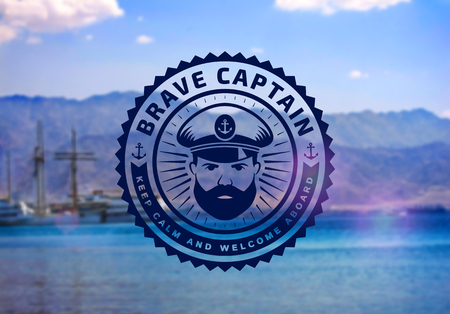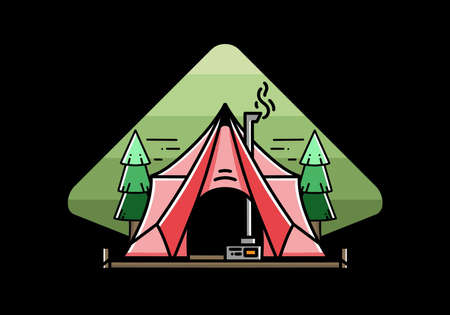1. Best Beach Camping Spots in the USA
Beach camping in the United States offers a wide range of experiences—from waking up to Atlantic sunrises on the East Coast to falling asleep under Pacific starlight on the West Coast. Whether youre looking for family-friendly campgrounds, secluded spots for a romantic getaway, or adventurous remote beaches, theres something for everyone. Heres a look at some of the best beach camping locations across the country.
East Coast Gems
The East Coast is known for its charming coastal towns and scenic beaches. Here are some popular beach camping destinations:
| Location | State | Highlights |
|---|---|---|
| Assateague Island National Seashore | Maryland & Virginia | Wild horses, dunes, oceanfront sites |
| Hunting Island State Park | South Carolina | Lush forest meets beach, lighthouse views |
| Hampton Beach State Park | New Hampshire | Family-friendly, boardwalk nearby |
West Coast Favorites
If you’re dreaming of dramatic cliffs and endless sunsets, head west. These spots offer unforgettable ocean views and cool Pacific breezes:
| Location | State | Highlights |
|---|---|---|
| Kirk Creek Campground | California | Big Sur coastline, elevated ocean views |
| Kalaloch Campground | Washington | Misty beaches, old-growth forests nearby |
| South Beach State Park | Oregon | Sandy shores, easy trail access |
Hidden Gulf Coast Treasures
The Gulf Coast is often overlooked but has some of the most serene and affordable beach camping options in the U.S.
| Location | State | Highlights |
|---|---|---|
| Topsail Hill Preserve State Park | Florida | Dune lakes, white sand beaches, full hookups available |
| Padre Island National Seashore | Texas | Primitive beach camping, sea turtle nesting site |
| Dauphin Island Campground | Alabama | Bayside and beachfront sites, birdwatching hotspot |
Tips for Choosing Your Spot:
- Check permits: Some locations require advance reservations or specific camping permits.
- Amenities matter: Decide if you want primitive camping or need facilities like showers and RV hookups.
- Weather check: Always check local forecasts before heading out—especially during hurricane season along the Gulf and Atlantic coasts.
Your Next Adventure Starts Here!
No matter which coast you choose, beach camping in the U.S. offers an incredible way to connect with nature while enjoying ocean views right from your tent or camper. Keep exploring to find your perfect sandy escape!
2. Essential Gear for a Perfect Beach Camping Trip
Planning a beach camping trip in the USA? Packing the right gear is key to making your coastal adventure smooth, safe, and enjoyable. Beach environments come with their own unique challenges—think sand everywhere, intense sun, salty air, and unpredictable weather. Here’s what you’ll need to be fully prepared.
Must-Have Camping Gear for Sandy Conditions
Sand can be both beautiful and bothersome. Make sure your gear is up to the task of handling it:
| Item | Why You Need It |
|---|---|
| Sand Stakes or Sand Anchors | Regular tent stakes won’t hold in loose sand—specialized sand anchors will keep your tent secure. |
| Tent with Mesh Ventilation | A breathable tent helps with airflow and reduces condensation in humid coastal areas. |
| Ground Tarp or Footprint | Protects your tent floor from moisture and makes cleanup easier. |
| Beach Mat or Blanket | Provides a comfortable sitting area that doesn’t trap heat like plastic tarps do. |
Sun Protection Essentials
The sun can be especially intense near the coast due to reflection off water and sand. Heres how to stay protected:
- Sunscreen (SPF 30 or higher): Reapply every two hours or after swimming.
- Wide-Brimmed Hat: Shields your face and neck from direct sunlight.
- Sunglasses with UV Protection: Protect your eyes from harsh rays and glare.
- Lightweight Long-Sleeve Shirts: Breathable fabrics offer protection without overheating.
- Pop-Up Shade Tent or Beach Umbrella: Great for mid-day breaks out of the sun.
Gear for Coastal Weather Changes
Weather on the coast can shift quickly—from sunny skies to sudden rain or chilly evenings. Be ready for anything:
- Waterproof Dry Bags: Keep electronics, clothes, and food dry even if waves crash nearby.
- Windbreaker or Rain Jacket: Lightweight protection against ocean breezes and sudden showers.
- Warm Layers: Even summer nights can get cool near the shore—pack a hoodie or fleece jacket.
- Tide Chart App or Printout: Know when tides are coming in to avoid flooding your campsite.
Other Handy Beach Camping Items
Add these to your packing list for extra comfort and convenience during your trip:
| Item | Description |
|---|---|
| Cooler with Ice Packs | Keeps food fresh in warm beach temperatures. |
| Broom or Small Brush | Sweep out sand from your tent daily to stay clean and comfortable. |
| Camp Stove or Portable Grill | If fires aren’t allowed on the beach, this is a great alternative for cooking meals. |
| Headlamp or Lantern | Navigating sandy trails at night can be tricky—hands-free lighting helps a lot. |
| Reusable Water Bottles or Hydration Packs | You’ll need more water than usual due to heat exposure—stay hydrated! |
Packing Smart for Your Destination
Your exact gear may vary depending on where youre headed—from Florida’s Gulf Coast to California’s rugged shores. Always check local rules about campfires, wildlife safety, and permitted camping zones before you go. In the next section, we’ll cover some of the best beach camping spots across the USA so you can plan your ultimate coastal getaway!

3. Beach Camping Tips and Tricks
Beach camping can be an unforgettable experience—if you know how to do it right. From choosing the perfect campsite to making sure your food stays fresh in the sun, here are some practical tips and tricks to help you enjoy every moment by the sea.
How to Score the Best Campsite
Popular beach campgrounds across the U.S. fill up fast, especially during peak season (late spring through early fall). Here’s how to increase your chances of landing a prime spot:
- Book Early: Reserve your site as far in advance as possible through official park websites like Recreation.gov or ReserveAmerica.com.
- Go Midweek: Avoid weekends if you can—midweek stays usually have better availability and fewer crowds.
- Check Tide Charts: Some campsites are closer to the water than others. Use tide apps or NOAA resources to make sure youre not setting up where the tide might reach overnight.
- Ask Locals: Join online camping forums or local Facebook groups to get insider info on hidden gems and less-crowded beaches.
Setting Up Camp on Sand
Pitching a tent on sand is different from setting up on solid ground. Heres what youll need to know:
| Tip | Description |
|---|---|
| Use Sand Stakes | Regular stakes won’t hold well in sand. Use wide, screw-style sand stakes or bury regular ones horizontally for better grip. |
| Create a Solid Base | Lay down a ground tarp to prevent moisture and keep gear clean. Add a layer of blankets or foam pads for comfort. |
| Shelter from Wind | Set up windbreaks with tarps or angle your tent behind dunes or natural barriers to reduce exposure. |
Keeping Food Safe at the Beach
The combination of heat, sun, and seagulls means you’ll need extra care when storing and preparing food at your campsite:
- Use a High-Quality Cooler: Invest in a cooler with thick insulation and use block ice instead of cubes—it lasts longer.
- Separate Coolers: Keep drinks in one cooler and perishable food in another to reduce how often you open each one.
- Avoid Leaving Food Out: Never leave snacks unattended—wildlife and birds will swoop in fast!
- Seal Everything Tightly: Store food in airtight containers or zip bags to keep sand, bugs, and animals away.
Staying Comfortable by the Sea
The ocean breeze is beautiful, but it can also bring chilly nights, intense sun, and lots of sand. Here’s how to stay comfy:
Packing Essentials
- Sunscreen & Shade: Always pack reef-safe sunscreen and set up a canopy or beach umbrella for daytime shade.
- Bedding for All Temps: Bring lightweight sheets for warm nights and a sleeping bag or blanket for cooler mornings.
- Sand-Free Zone: Create a “clean zone” outside your tent using mats or towels so you’re not tracking sand inside.
- Laundry Bags & Wet Wipes: Keep dirty clothes and sandy gear separate; wet wipes help with quick cleanups.
Dress Smart
The key is layering. Wear moisture-wicking clothing during the day and add layers as temperatures drop at night. Don’t forget a hat, sunglasses, and flip-flops that are easy to rinse off.
Pro Tip:
If youre camping in an area where fires are allowed, bring a fire pit ring or fire-safe container. Many beaches require fires to be contained above ground level—and always check local regulations first!
With these tips, youre well on your way to enjoying beach camping safely and comfortably across America’s coastlines.
4. Rules and Regulations You Need to Know
Before pitching your tent or parking your RV on a sandy shore, its important to understand the rules that govern beach camping in the United States. These rules can vary widely depending on whether youre staying at a local beach, state park, or federally managed coastline.
Know the Jurisdiction: Local, State, and Federal
Beach camping areas are typically managed by different levels of government. Each has its own set of rules you must follow:
| Authority | Examples of Locations | Common Regulations |
|---|---|---|
| Local | City beaches, county parks | No overnight camping unless specifically designated; noise ordinances; alcohol restrictions |
| State | State parks, public beaches | Permit requirements; designated camping zones; max stay limits (usually 7-14 days) |
| Federal | National seashores, BLM land | Backcountry permits; Leave No Trace rules; fire bans during dry seasons |
Campfire Restrictions
Campfires are one of the best parts of camping, but they’re not always allowed on the beach. Always check for posted signs or online updates before lighting a fire. Some areas require fire rings or allow only propane stoves due to wildfire risks. During high fire danger periods, fires may be banned altogether—even in designated pits.
Wildlife Protection Guidelines
Many beach areas are home to protected species like sea turtles and shorebirds. Its crucial to respect wildlife regulations:
- Avoid disturbing nesting areas marked by signs or fencing.
- Do not feed wild animals—this can harm them and disrupt the ecosystem.
- Keep pets leashed or avoid bringing them if prohibited.
Length-of-Stay Limits
To prevent overuse and ensure fair access for everyone, most campgrounds have time limits for stays. Heres what you might expect:
| Campsite Type | Typical Max Stay Duration |
|---|---|
| Developed Beach Campgrounds | 7–14 consecutive days |
| Dispersed or Primitive Sites | Up to 14 days per month (varies by agency) |
How to Stay Informed
The best way to make sure youre following all the rules is to check with the managing agency’s website before you go. Many state parks and federal lands offer downloadable brochures and maps with updated policies. Also consider calling ahead if you have specific questions about things like campfire bans or reservation systems.
Quick Tip:
If youre unsure about any rule while on-site, look for information boards near parking lots or ranger stations—they usually display current alerts and guidelines.
By understanding these key regulations, youll help protect our natural spaces and enjoy a stress-free beach camping adventure across the USA.
5. Family-Friendly vs. Adventure-Focused Campsites
Beach camping in the USA offers something for everyone—from easygoing family getaways to adrenaline-pumping outdoor adventures. Choosing the right spot depends on what kind of experience youre looking for. Here’s a closer look at how family-friendly beach campsites compare to those designed for thrill-seekers, surfers, and remote wilderness lovers.
Family-Friendly Beach Campgrounds
If you’re planning a trip with kids or just want a low-key vibe, these beach campgrounds are perfect. They usually offer well-maintained facilities, easy access to amenities, and safe swimming areas.
Top Features:
- Restrooms and showers nearby
- Picnic tables and fire pits
- Lifeguarded beaches
- Playgrounds or nearby attractions
Best Spots for Families:
| Location | State | Why It’s Great for Families |
|---|---|---|
| Cape Henlopen State Park | Delaware | Paved bike trails, nature centers, calm waters |
| Myrtle Beach State Park | South Carolina | Sandy beaches, shaded campsites, educational programs |
| Doheny State Beach | California | Lifeguards on duty, picnic areas, close to shops and restaurants |
Adventure-Focused Beach Campsites
If you’re all about surfing big waves, hiking through rugged terrain, or setting up camp far from civilization, there are plenty of beach destinations that cater to your wild side.
Top Features:
- No crowds—often remote or hike-in only spots
- Bigger waves ideal for surfing or kayaking
- Lack of amenities—perfect for self-sufficient campers
- Dramatic landscapes and wildlife viewing opportunities
Best Spots for Adventurers:
| Location | State | Main Draws for Adventurers |
|---|---|---|
| Kalama Beach (Kalalau Trail) | Kauai, Hawaii | Multi-day trek required, epic cliffs and seclusion |
| Pfeiffer Beach (Big Sur) | California | Dramatic coastline, strong surf, limited access camping spots nearby |
| Cape Lookout National Seashore | North Carolina | No roads—requires ferry access; great fishing and wild horses roam freely |
The Main Differences at a Glance:
| Family-Friendly Campsites | Adventure-Focused Campsites | |
|---|---|---|
| Amenities Available? | ✔ | ✘ (usually minimal) |
| Easily Accessible? | ✔ | ✘ (may require hiking or boat) |
| Lifeguards Present? | ✔ | ✘ |
| Suits Kids & Beginners? | ✔ | ✘ |
| Suits Surfers & Explorers? | ✘ | ✔ |
No matter your style—whether you’re roasting marshmallows with the kids or chasing waves at sunrise—the U.S. coastline has a beach camping spot that fits your needs perfectly.


